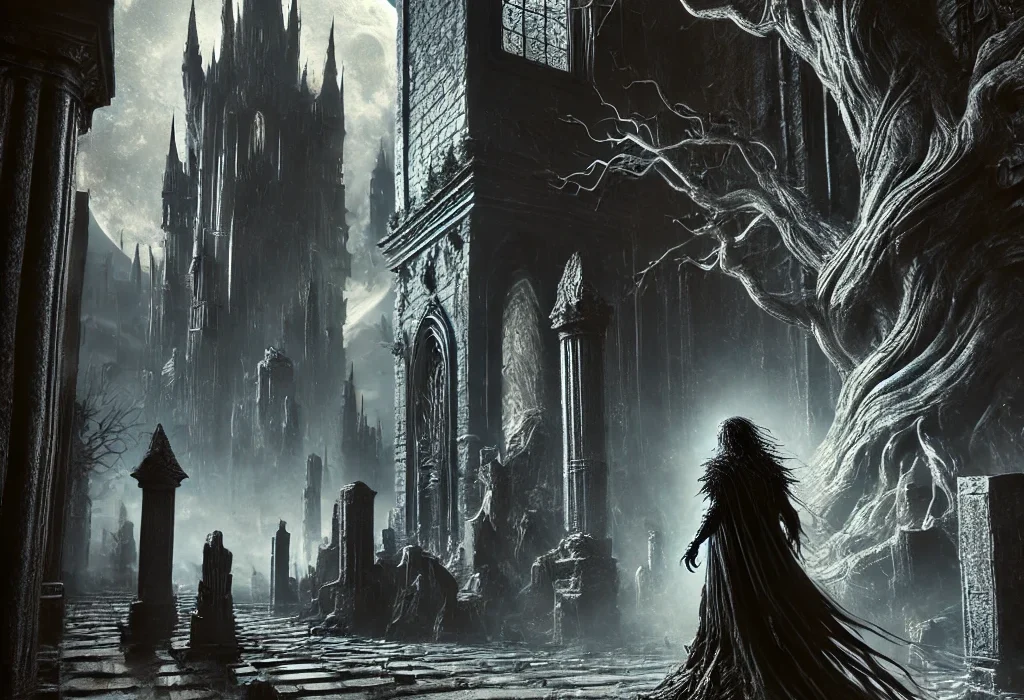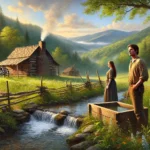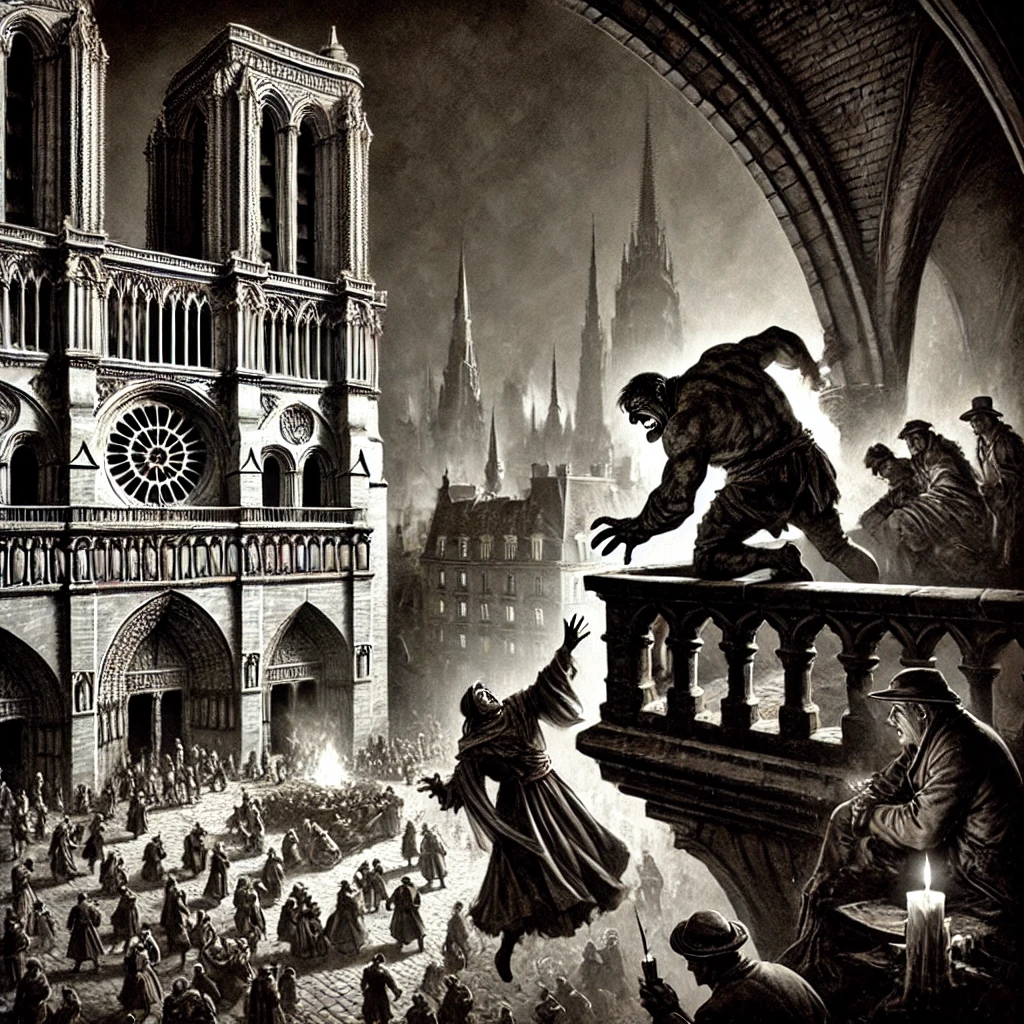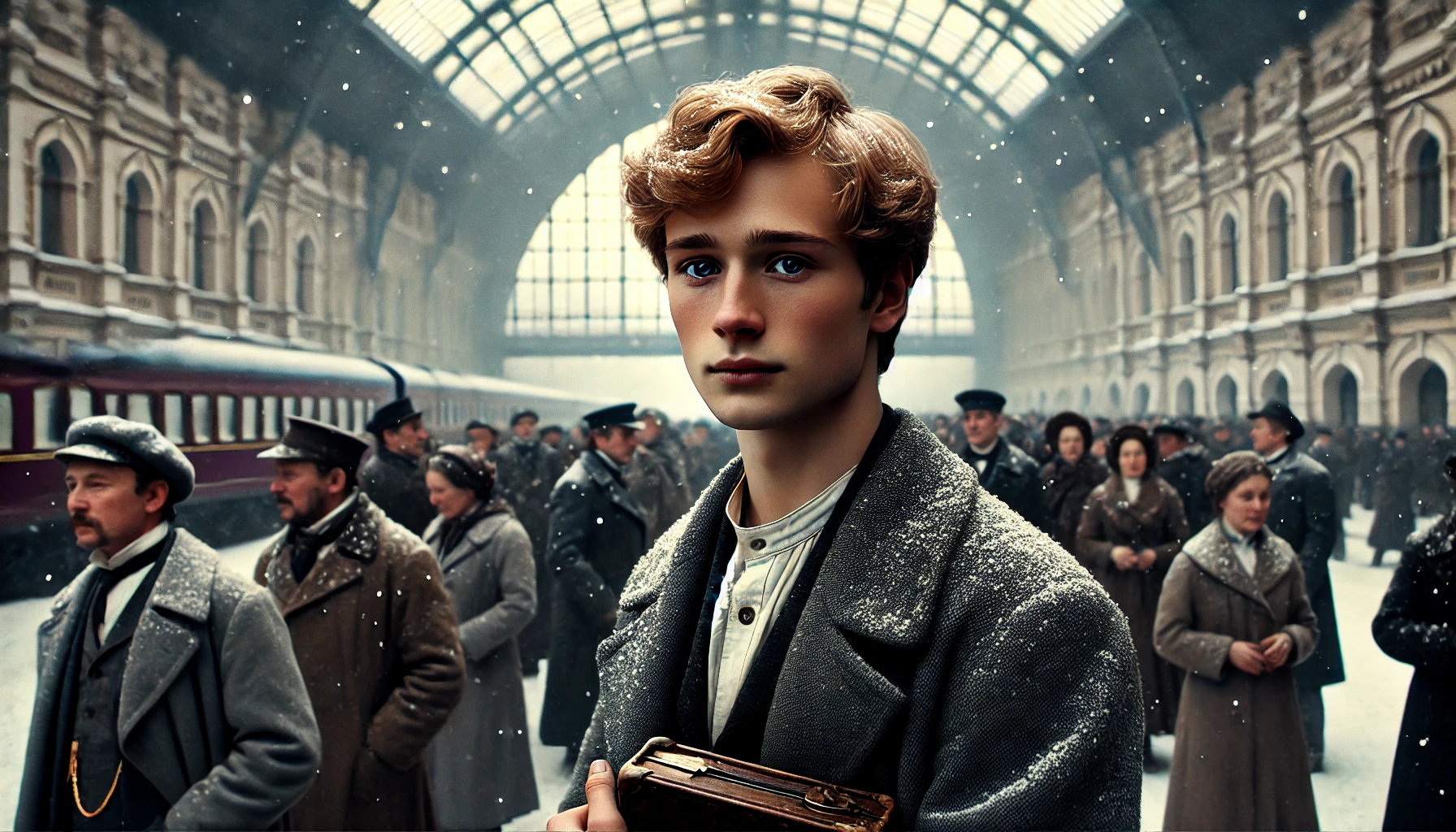The Outsider, written by H.P. Lovecraft and published in 1926, is a short horror story that encapsulates Lovecraft’s mastery of cosmic horror and existential dread. Known for his eerie, atmospheric style, Lovecraft crafts a narrative about isolation, self-realization, and the terror of discovering one’s true nature. The story explores themes of alienation and the grotesque, gradually building a terrifying revelation that leaves both the protagonist and the reader profoundly disturbed.
Plot Summary
In an ancient, crumbling castle, deep within an oppressive forest, a solitary figure has lived for as long as memory can serve. The castle is vast and eerie, filled with decaying walls, damp corridors, and the quiet sounds of scurrying rats and bats. Its dark, labyrinthine halls seem to stretch endlessly, the air heavy with an ominous sense of abandonment. Shadows cling to every corner, as there is no light, neither from within nor from the outside world. The castle is overgrown with grotesque trees that shroud it from the sun, creating a perpetual gloom.
The figure inhabiting this desolate fortress remembers nothing of a world beyond. There are no other beings around him, no voices, no presence but his own. He has never known companionship, nor has he ever seen his own reflection, for there are no mirrors in the castle. His only knowledge of existence comes from the ancient, dust-covered books strewn about the castle’s rooms—volumes that speak of life beyond the oppressive forest, of people who laugh and walk in the sun.
For years, this strange inhabitant has been content to remain in his shadowy prison, reading and dreaming of a world he cannot recall. But something stirs within him, a desire for more. The oppressive isolation and the suffocating gloom begin to wear on his mind, and a growing hunger for light gnaws at him. There must be more than this twilight existence, he thinks. Slowly, that desire transforms into a need so fierce that it drives him to action. He resolves to leave the castle, to find the world of light and warmth that exists beyond the cold stone walls and dark woods.
One night, unable to bear the darkness any longer, he decides to scale the tower that looms above the castle. The black tower, partially ruined and impossibly steep, is the only structure that breaches the canopy of the grotesque trees. It seems to offer a glimpse of the world beyond, and the figure feels compelled to reach its heights. Clinging to the worn stones, he climbs with trembling hands, struggling against the chill that wraps around him like a shroud. The ascent is long and torturous, filled with a dread that grows as the climb progresses. Yet, driven by desperation, he continues upward, his mind filled with visions of what might await him beyond the castle’s walls.
After what feels like an eternity, he reaches the top. His hand presses against a stone slab, which gives way, revealing an opening. Crawling through, he finds himself in a stone chamber. He searches for a window, eager to see the moon and stars for the first time. Instead, he discovers shelves lined with long, oblong boxes, ancient and disturbing in their silent presence. The air in the chamber is thick with the weight of untold centuries. But before his mind can dwell on the strange surroundings, his hands find a doorway. A burst of strength allows him to pry it open, and there, beyond the door, is the light he craves—the radiant glow of the full moon, shining through an ornate iron grate.
Ecstatic, he rushes toward the light, climbing a few steps and pushing open the grating. He steps out into what he believes is the world outside, only to find that he is standing on solid ground. The realization sends a shock through him. Instead of standing high above the treetops as he expected, he is at ground level, in the midst of a strange and silent landscape. Marble slabs and ancient columns surround him, and ahead, a ruined stone church looms under the moonlight.
Confused and shaken, the figure stumbles forward, desperate to make sense of his surroundings. He wanders through this alien terrain, his mind spinning with the grotesque wonder of it all. After hours of walking, he comes upon a castle—one that seems familiar and yet disturbingly altered. The moat has been filled in, and the towers appear partially demolished. Yet, in the distance, he sees windows blazing with light. There are people inside, and the sounds of revelry drift out, filling the air with an unfamiliar gaiety.
Drawn to the warmth and light, he approaches the open window and peers inside. The scene is a stark contrast to the world he has known. The people, dressed in strange clothes, laugh and converse, unaware of the figure lurking just beyond the window. A powerful sense of recognition stirs within him as he gazes at their faces, though he cannot place where he might have seen them before. The pull of their joy is too much to resist. With a trembling hand, he steps through the low window, crossing into the room.
The reaction is instantaneous and horrific. At the sight of him, the joyous crowd descends into chaos. Faces contort in terror, and screams fill the room as people flee in panic. Some faint, others crash into walls and furniture in their desperate attempt to escape. Confusion swirls in the figure’s mind as he stands in the center of the chaos, unable to understand why his presence has caused such horror.
In the midst of this madness, he catches a glimpse of a figure in an alcove—a being whose grotesque appearance defies description. Its body, a loathsome parody of humanity, is decayed and skeletal, dressed in the rotting remnants of ancient clothing. For a moment, the figure’s mind is flooded with a terrible realization. The abomination is no stranger—it is himself. He stares into the glass, and what he sees is the truth of his existence: he is the monster, the outsider who does not belong in the world of the living.
Horror washes over him as he stumbles away from the reflection. He now understands why the revelers fled, why their faces twisted in fear. He is no longer part of their world, nor has he ever been. His existence is one of decay, of alienation from everything he once dreamed of. Overwhelmed by the revelation, he flees into the night, racing through the desolate landscape back to the graveyard from which he emerged. The castle, the trees, the light—all of it was a false hope.
Now, he knows his place. He rides with the ghouls on the night wind, lurking among the shadows and forgotten tombs. The world of the living is no longer his to seek, for he is forever an outsider, condemned to roam in darkness, forever separate from those who still walk in the light.
Main Characters
- The Narrator: The unnamed protagonist, whose eerie journey of self-discovery forms the crux of the story. Living in near-total isolation in a decaying castle, he struggles with an indistinct sense of self and a longing to escape. His journey reveals his true, terrifying nature, a discovery that leads to existential horror.
- The Outsider: Though seemingly a different character at first, the outsider is revealed to be the narrator himself, a ghastly and decayed being who horrifies others with his appearance.
Theme
- Isolation and Alienation: The narrator has lived in a state of complete seclusion, unaware of any other beings or the passage of time. His isolation feeds his ignorance of his own nature, and as he ventures beyond the castle, he is met with fear and rejection by the outside world, heightening his feelings of alienation.
- Self-Discovery and Horror: A central theme of the story is the narrator’s journey toward self-awareness. The climactic revelation that he himself is the grotesque creature he feared is a metaphor for the terror of facing one’s own true nature or confronting uncomfortable truths.
- The Grotesque and the Macabre: Lovecraft uses vivid, unsettling imagery to build a sense of dread. The decrepit castle, the decayed landscape, and ultimately, the narrator’s monstrous form all emphasize the theme of decay, both physical and existential.
- Existentialism and Cosmic Horror: The narrator’s horror upon realizing that he is an outsider, forever alienated from the world of the living, reflects Lovecraft’s philosophy of cosmic horror. The protagonist’s existence is rendered insignificant in the grander, indifferent scheme of the universe.
Writing Style and Tone
Lovecraft’s writing style in The Outsider is marked by its dense, evocative descriptions and an atmosphere that oozes dread and mystery. He uses elaborate, archaic language to transport the reader into the shadowy, oppressive world of the protagonist. The lack of direct exposition about the narrator’s identity is a deliberate technique, allowing the horror to unfold slowly through mood and setting rather than explicit description. The narrative is introspective and reflective, creating a sense of intimacy with the narrator’s thoughts while still keeping the reader distant from the truth of his existence until the climactic moment.
The tone of the story is melancholic and deeply unsettling. Lovecraft builds an atmosphere of constant unease, drawing the reader into the narrator’s lonely and decayed world. As the story progresses, this melancholic tone shifts into one of horror and despair as the narrator’s grim reality is revealed. Lovecraft’s trademark cosmic horror—where humanity is insignificant in the face of an uncaring universe—pervades the story, culminating in a disturbing revelation that leaves both the protagonist and the reader with a haunting sense of dread.
We hope this summary has sparked your interest and would appreciate you following Celsius 233 on social media:
There’s a treasure trove of other fascinating book summaries waiting for you. Check out our collection of stories that inspire, thrill, and provoke thought, just like this one by checking out the Book Shelf or the Library
Remember, while our summaries capture the essence, they can never replace the full experience of reading the book. If this summary intrigued you, consider diving into the complete story – buy the book and immerse yourself in the author’s original work.
If you want to request a book summary, click here.
When Saurabh is not working/watching football/reading books/traveling, you can reach him via Twitter/X, LinkedIn, or Threads
Restart reading!








